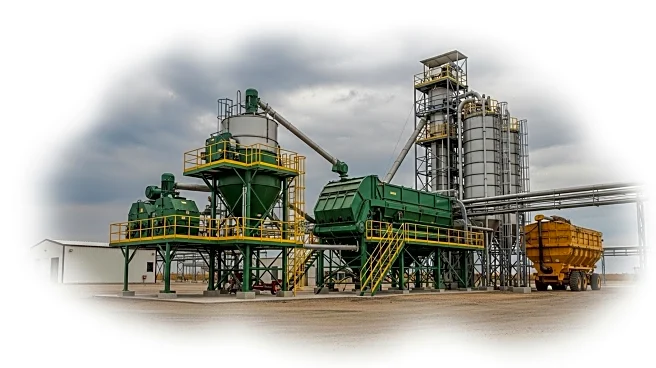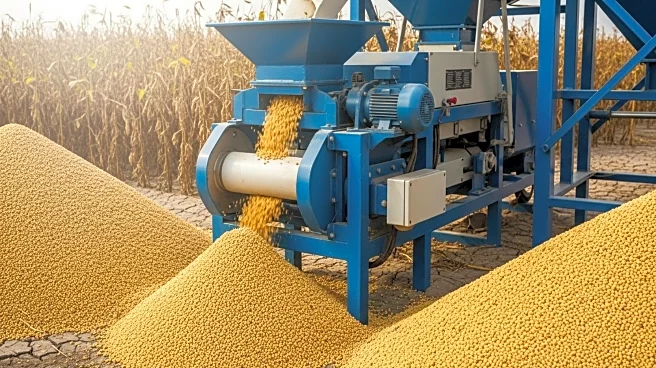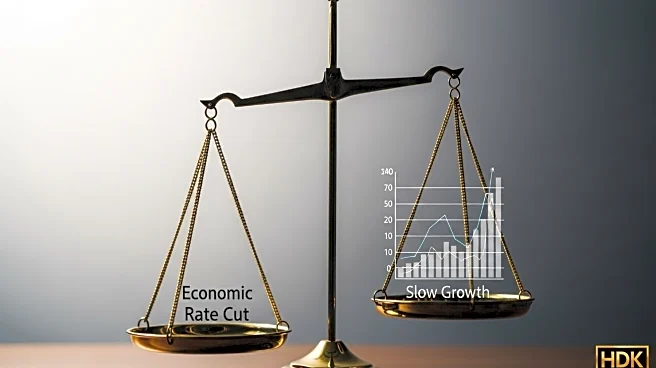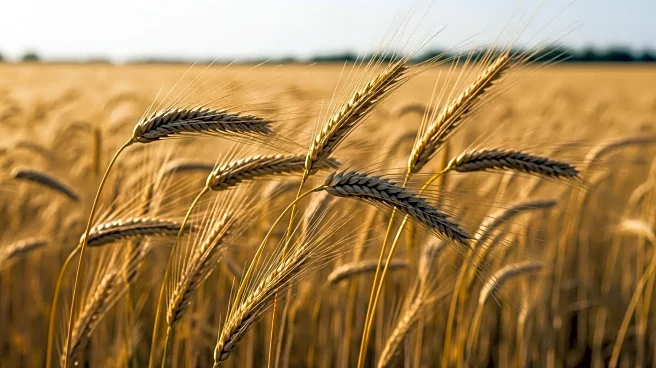What is the story about?
What's Happening?
The U.S. Department of Agriculture (USDA) has reported a significant increase in soybean crush and oil production for July 2025. Approximately 6.14 million tons of soybeans were crushed, marking a 5.9% annual increase and a rise from 5.91 million tons in June. Oil production also saw a 4% monthly increase, totaling 2.43 billion pounds, with a 6% gain annually. Despite these positive figures, crop conditions are deteriorating, with only 69% of U.S. corn rated as good or excellent, down from 71% the previous week. Soybean ratings also declined, with 65% earning top ratings compared to 69% the week prior. The spring wheat harvest is progressing, with 72% completed, up from 53% a week earlier. Export inspections for corn and soybeans increased, while wheat inspections decreased.
Why It's Important?
The increase in soybean crush and oil production is a positive development for the agricultural sector, potentially boosting the U.S. economy through increased exports and domestic supply. However, the worsening crop conditions could pose challenges for farmers and the agricultural industry, impacting future yields and market stability. The decline in crop ratings may lead to increased volatility in grain and soybean futures, affecting pricing and trade decisions. Stakeholders in the agricultural sector, including farmers and commodity traders, must navigate these mixed signals to optimize their strategies and mitigate risks.
What's Next?
As crop conditions continue to deteriorate, stakeholders may need to adjust their strategies to address potential yield reductions and market fluctuations. The USDA's upcoming reports will be crucial in providing updated insights into crop progress and conditions. Farmers may need to implement adaptive measures to enhance resilience against adverse weather conditions and optimize production. Additionally, the ongoing legal challenges regarding tariffs imposed by President Trump could influence commodity markets and trade relations, necessitating close monitoring by industry participants.
Beyond the Headlines
The current agricultural developments highlight the broader implications of climate variability and trade policies on the U.S. farming industry. The decline in crop ratings underscores the need for sustainable farming practices and investment in technology to improve resilience. Furthermore, the legal challenges to tariffs could have long-term effects on international trade relations and economic policies, influencing the agricultural sector's global competitiveness.
AI Generated Content
Do you find this article useful?















